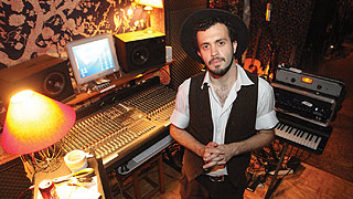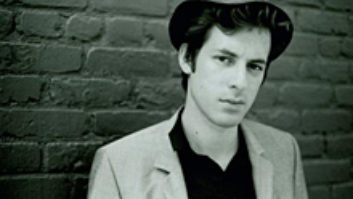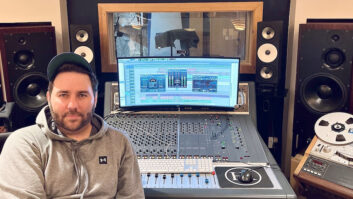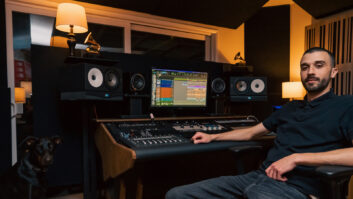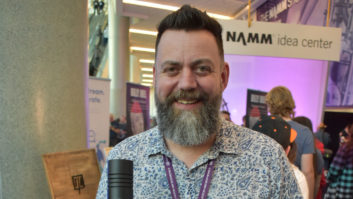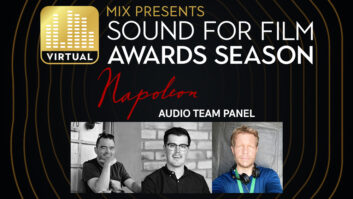Guitarist/singer James “Blood” Ulmer has traveled down many unusual musical pathways in his career, collaborating successfully with such diverse talents as avant-garde innovators/saxophonists Ornette Coleman, Arthur Blythe and David Murray, guitarist/film scorer/world music maven Ry Cooder, and jazz legends such as saxophonist Joe Henderson and drummer Art Blakey, among many others. He has forged a distinctive style on his own recordings and in combination with other players. Without question, he has challenged some musical boundaries. But surprisingly, the powerful, soul-stirring jubilation of straight-out blues is a style the South Carolina-born artist has shied away from — until now.
“I always felt that Blood was a blues singer,” asserts guitarist Vernon Reid, best known for his work with the groundbreaking band Living Colour. From his home studio on Staten Island, (N.Y.), he spoke about Memphis Blood, a collection of blues covers featuring Ulmer singing and playing with typical fire and abandon. Reid conceived, produced and played on several tracks of the CD. “From the first time he had a record on Rough Trade, Are You Glad To Be In America, I just heard a blues singer,” he continues. “For the last three years, whenever I would see Blood at a show or on the street, I would say, ‘I think you should do a blues record. But not like a harmolodic recording; instead, a blues record of you singing classic blues songs.’ Because I think he’s got one of the great original blues voices.”
Ulmer, on the other hand, wasn’t too sure about doing a project of this type. It was something he had never done before, and he wouldn’t be in control, as he normally is for his recordings. But he trusted Reid, who was a protegé of his before forming Living Colour. “This was the first time I was totally produced by someone since Ornette Coleman [Tales of Captain Black], without me saying a word,” Ulmer chuckles from his New York apartment. “Also, nobody has been able to produce me, ’cause I won’t listen to anyone. But Vernon had been talking to me for years about making a blues record. And finally something came up, and he said, ‘I got the idea. I want to take you down to Memphis into the Sun Studios, and I want you to do the hit songs of all the blues greats. It’s going to be something — trust me.’ So I said okay.
“I always had a problem just doing straight-out blues,” Ulmer adds, “because I came from the South and the church. My dad is a preacher, so I would play stuff that was real spiritual. But, basically, I was always trying to come from another side of the music instead of being a straight out and out blues player. Vernon brought that side out of me at a very late age, and I was happy that he did.”
In April 2001, Reid and Ulmer started working at the legendary Memphis studio. It rained every night that they worked, which made the atmosphere appropriately swampy. The setting was certainly right for these sessions, but Reid says he had other reasons for picking the facility: “Years ago, Living Colour played in Memphis, and we actually took the tour of Sun Studios. I walked into the room, and I said, ‘I have to come back here. I don’t care how long it takes, I have to do something here,’ because I got something out of the room.”
For the sessions, Ulmer worked with a band that Reid organized. The players were Charles Burnham on violin and mandolin, Mark Peterson on bass, Aubrey Dayle on drums, Rick Steff on keyboards/accordion, David Barnes on harmonica, plus Reid on second guitar. “I’ve known most of these guys for a while, but it’s the first time we recorded together,” Reid comments, “so it was very fresh.”
They recorded the body of the CD in just three days — quite a contrast to the three years the producer spent trying to get the project going. And for Ulmer, the whole affair became a musical and spiritual journey of self-discovery. Following the directive of Reid, Ulmer did some exciting experimentation with guitar effects, and on a personal level, he found himself dealing head-on with some issues he’d been avoiding for a long time. “We did Howlin’ Wolf’s ‘Back Door Man,’ but he didn’t want to do it initially,” Reid says. “For him, it was dark and dangerous. He turned and said, ‘I’ve been there.’ That was the difficult part, because he’s been that person in his life.”
Son House’s “Death Letter” also stirred some uncomfortable feelings for Ulmer, but once recorded, it proved to be one of the most powerful tracks on the CD. Reid recalls, “Blood was complaining that it had too many lyrics, was too long and about some other things. So I started talking to him about the song and how it was about a man finding out his ex-girlfriend was dead. So then Blood said he had lost three of his ex-girlfriends. I had no idea that had happened to him. So the song turned into this beautiful exorcism. I felt incredibly privileged and honored to be a part of something that became much bigger than I had originally envisioned.”
Capturing Reid’s conceptions and Ulmer’s catharsis on tape was Sun Studios staff engineer James Lott. He talked with the producer months before the project began and had a good understanding of what Reid’s prime objective was. “He said he was going to take James back to his blues roots,” Lott says. “It was a normal setup for me, with guitars and amps out in the front room, which used to be an office, and drums in the middle room with all the guys. Bass was DI, and we overdubbed vocals, with maybe a few solos, too. Everything was live, except for those things. It was recorded on 2-inch, 24-track analog tape, which is the format we use for most of the stuff that I do.”
Of course, the studio’s colorful history overflows with the architects of rock, blues and country. Consequently, all types of artists come to Sun to try to capture that vintage analog sound that helped make legends of Elvis Presley, Jerry Lee Lewis, Howlin’ Wolf, Carl Perkins and so many others. “That’s what they’re looking for,” affirms Lott, who’s been there since 1986.
In truth, the landmark studio hasn’t changed a lot over the years. Original owner and recording icon Sam Phillips moved on to create the Phillips Recording Service, leaving the studio dormant until Lott started working there under different ownership. “The front two rooms are exactly the same as they were,” he notes, “but the control room obviously had to change. I couldn’t compete using mono machines. So we put the new gear in.” Some of that equipment included a Soundcraft 1600 board, later replaced with a 2400, an MCI 24-track deck, and a few Neumann mics, along with RCA 77s and other vintage models.
For most of the Memphis Blood sessions, Reid was out on the floor with Ulmer, playing guitar and offering guidance. The technical end was left up to Lott. “I do as little EQ as possible; sometimes, it’s necessary,” he states. “I will use a little for the drums, but I try to keep everything as flat as possible, so that whoever mixes has an easy go of it. Ultimately, I want to get good sounds to tape, so if it’s really dark, I’ll brighten it up.
“These sessions were never hectic, the band was great, and Blood was in a good mood along with everyone else. That made it real simple. I did do some rough [mixes], which they took with them. I had a lot of fun working on the project, and there was some nice interaction between Blood and Vernon. But what really stands out is Bloods’ guitar work and vocals. They’re incredible!”
Overdubs and mixing were done at Studio 900 in New York City. Reid did his first solo record, Mistaken Identity, there and has since developed a strong relationship with owner/engineer Joe Johnson. Like Sun, Studio 900 is mostly analog-oriented. “I have a JH-24 with a lot of guitar amps, Neve outboard stuff, a little Neve board and some of the modules,” Johnson says. “I also have ADAT, and I’m looking into some hard disk stuff. Plus, I have a grand piano and a B3 organ. Keith Richards has done a few projects here; so have many Latin and blues musicians, and people from all around the world that want to come to New York and do something live.
“For this album, we mixed to half-inch analog on a Sony 502 in about three days. Their pre-recorded tracks had a pretty cool vibe to them. It was pretty straightforward — mainly, they wanted to capture the sound of that room [Sun Studio] down there. But there was a lot of bleed on everything, so basically you pull up the faders and try to blend everything. I probably would have gone for more separation if I had been there, but that was what they were going for. There weren’t any real gizmos or anything that I used. However, I did use the Quantec QRS, an old box for reverb and delay, through an E module.”
“We really were on a mission; everyone that was involved with this project was there because they love this man,” Reid says. “It’s really about James, playing and singing the blues. I was just a catalyst.”
Ulmer adds with a laugh, “I’m glad I trusted the young brother — he did a hell of job! With him producing, I didn’t have to think about anything, like writing or picking songs; just performing. Also, I’ve never done music that’s so defined into one category. They’ve put my music, previously, into all kinds. But this recording is like a launching pad for me, and I’m already singing some of these songs on the road now. I call it ‘James Blood blues.’”
